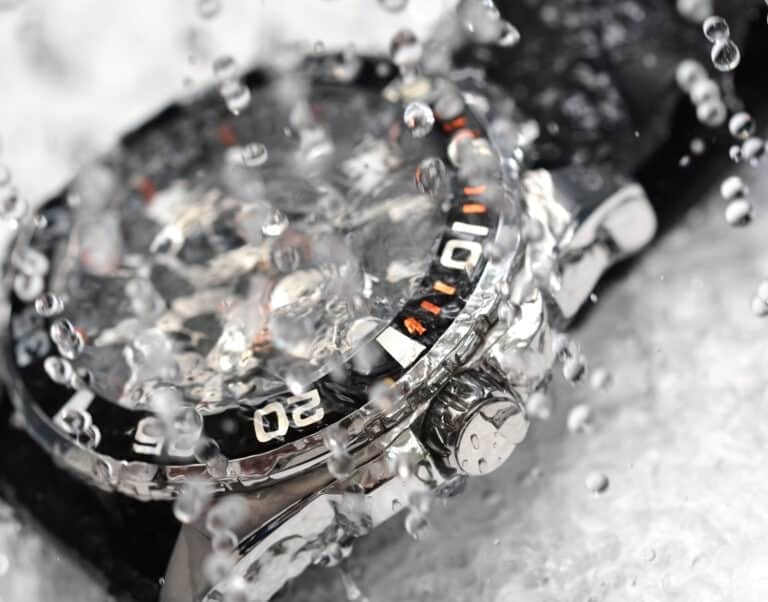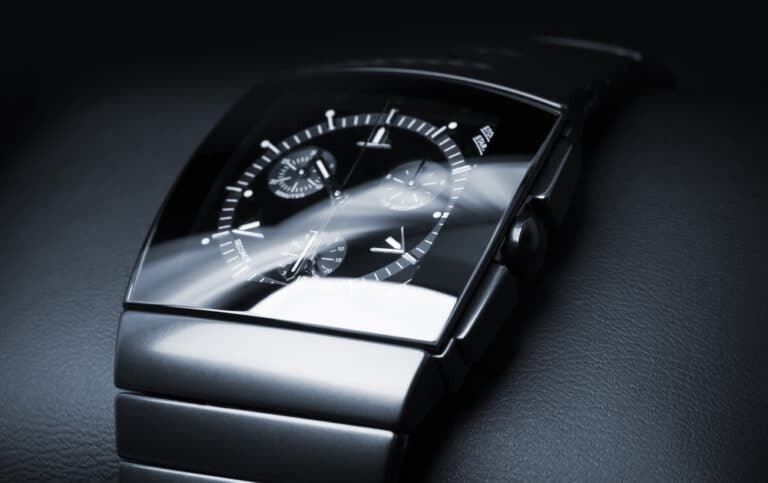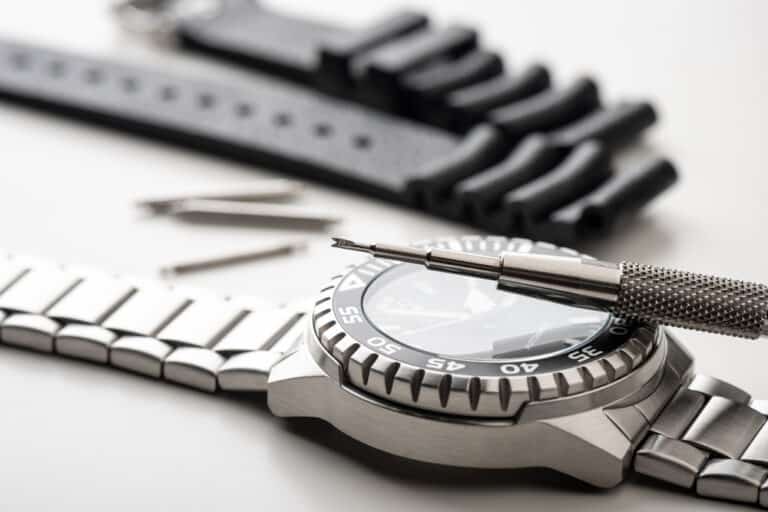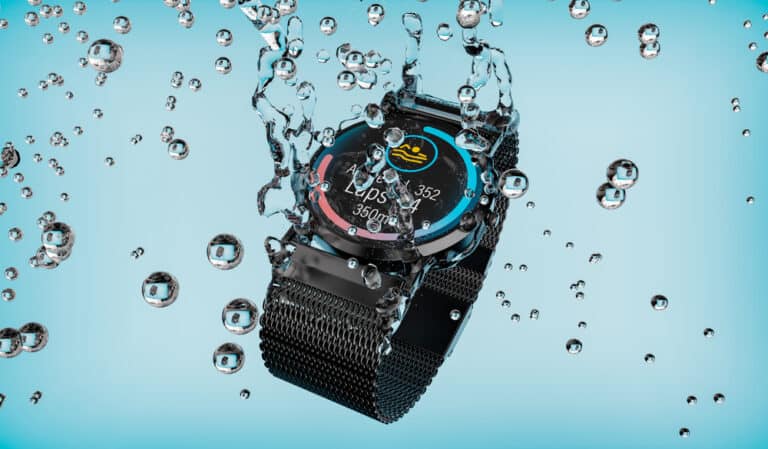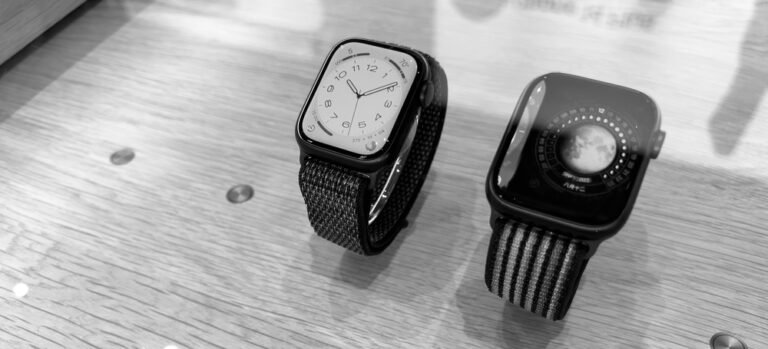Hand – or analog – watches use hands to indicate the time to the hour, minute, and second and can come with different mechanisms, or motors, if you will. On the one hand, clocks and their smaller counterpart, watches, have evolved for efficiency and lower costs, but on the other hand, timepieces with intricate mechanisms are seen as collectibles.
Analog watches can be mechanical or quartz-driven. The working components of a watch are called a movement. A simple mechanical watch’s movement comprises about 130 tiny components, driven by an unwinding spring. Analog quartz watches are electro-mechanical and require a battery.
Fully mechanical watches with gears and levers and clever designs require a high level of craftsmanship and are expensive to make and buy. Quartz watches can be digital or analog, not as intricate and expensive to produce. Either way, let’s take a look at the inner workings of each.
The Motors Of Mechanical And Automatic Hand Watches
The motors inside mechanical watches do not rely on an electrical charge from a battery. Instead, mechanical watches use a tightly wound-up spring that needs to be tightened daily using a crown.
Automatic mechanical watches use the movement of the person wearing the watch to wind up the mainspring. Inside the watch is a very flat weight that is wedge-shaped or semi-circular, and it can pivot around a shaft joined to the mainspring. This weight can move around or oscillate with bodily movement, winding up the mainspring in the process.
The slowly unwinding mainspring powers a balance wheel and hairspring, which, through the escapement, regulates the gear train and dial train, moving the hands. The main parts of mechanical hand watches are explained in more detail below.
The Main Parts Of A Mechanical Hand Watch Motor
As mentioned, a simple mechanical watch contains an average of 130 parts. The parts of the motor are collectively known as the movement, and the main parts are as follows:
The Mainspring
This spring comprises a tightly coiled ribbon of 20–30 cm hardened and blued steel, or specialized steel alloy, which is 0.05-0.2 mm thick. It can be tightened manually using the crown or automatically with a movement-sensitive oscillating weight.
The Balance Wheel And Hairspring
The balance wheel and hairspring regulate the division of time by the way they oscillate, like a continuous see-saw motion. The see-saw motion of the balance wheel moves the hairpin in a subtle side-to-side motion.
With its two “feet”, the hairpin rocks from side to side between the teeth of the turning escapement, clicking as they go. The clicking is the ticking sound you hear in mechanical watches – at a rate of two per second. Tick-tock.
The Escapement
The escapement is a type of cog with long, thin teeth that catch onto the feet of the hairpin that regulates its rotation speed. The job of the escapement is to distribute or permit the controlled steps or pulses from the oscillating balance wheel and hairspring to the gear train, setting it in motion.
The Gear Train
The gear train is a set of gears (cogs) of various sizes, which transmits mechanical power to drive the dial train and sub-dial train, if there is one.
The Dial Train
The dial train is responsible for moving the various hands on a watch face or dial. The hour hand moves very slowly and does two revolutions a day, the minute hand does 1,440 revolutions daily, and the second hand does 86,400 revolutions daily!
The Winding Stem
In a manually-wound watch, a winding stem is connected to the crown. The crown is the little knob used for winding and adjusting a watch. In an automatic, self-winding mechanical watch, there is an oscillating weight inside the watch that pivots with the person’s movement and tightens the spring.
The Complications Of Mechanical Watches
A watch with extra displays is called a complex watch, the extras being called complications. But a watch with all the extra bells and whistles like chimes, a stopwatch, a chronograph (date), and an astronomic indicator is called a grand complication. A mechanical watch with complications will surely have more than 130 parts.
You can follow this link for an excellent animation and explanation of the parts inside a mechanical hand watch.
The Motors Of Quartz Hand Watches
Quartz analog watches differ from mechanical analog watches in a few ways, the most notable being the power source. In fully mechanical hand watches, we see the energy to drive the parts starts with a wound-up spring that releases energy through its slow unwinding. In a quartz watch, however, the gears inside the watch are regulated by a tiny piece of quartz crystal.
Quartz is a common mineral. It contains a chemical compound called silicon dioxide and is piezoelectric. The Piezoelectric Effect means some materials can create an electrical charge when put under mechanical pressure.
Quartz generates a tiny electric voltage when squeezed, plus it vibrates at a precise frequency (32,768 Hz per second) when a voltage is applied to it. Quartz watches use very little battery power and are consistent and efficient time-keepers, needing minimal adjustment.
The Main Parts of a Quartz Hand Watch Motor
The piezoelectric quality of quartz means that very little external energy is required to keep the little crystal humming about its work. As a result, a quartz watch does not need a mainspring, crown, and balance wheel to create an energy source for driving the gear train. Instead, the power comes from a battery, a microchip circuit, a quartz crystal, and a Lavet-type stepping motor.
Low Voltage Battery
The little battery used in quartz watches is typically made from silver oxide and provides a voltage of 1.55V. The battery provides a current to the microchip circuit.
Microchip Circuit
Depending on the make of the watch, there can be one or more microchip circuits, but one can do the job if designed accordingly. The microchip circuit sends a current to the quartz crystal, causing it to vibrate.
Quartz Crystal
The quartz crystal is precision cut to be shaped like a tuning fork and is set in a crystal oscillator. The function of the oscillator is to take advantage of the piezoelectric quality of quartz, thereby “charging” the quartz, keeping it vibrating, and drawing very little battery power. The quartz vibrates at a rate of 32,768 Hz per second.
These vibrations are sent to the microchip circuit, which has been preprogrammed to convert 32,768 oscillations into one electrical pulse. These pulses are then sent to the electro-mechanical stepping motor (Lavet-type) at a rate of 1 per second.
Electro-Mechanical Stepping Motor
The tiny stepping motor inside the watch receives the electrical pulses and converts them to mechanical energy, which then sets the gear train in motion, which in turn sets the dial train in motion.
Given that it is an electro-mechanical process, quartz watches are quieter, and the ticking sound you’d hear would be once a second. A quartz watch will still have a crown on the side, but its use will be to set the hands in place when adjusting the time.

Conclusion
The motors inside hand or analog watches are called movements. Mechanically-powered movements are driven by a spring and must be wound up manually or automatically using motion. Electro-mechanical movements or motors use quartz crystal that is given a charge from a small battery and have a microchip circuit and a stepping motor as part of their movement.
References
- https://en.wikipedia.org/wiki/Lavet-type_stepping_motor#
- https://www.eda.admin.ch/aboutswitzerland/en/home/dossiers/einleitung—schweizer-uhren/bauteile-einer-uhr.html
- https://www.explainthatstuff.com/quartzclockwatch.html
- https://www.jewelersmutual.com/the-jewelry-box/10-parts-watch-you-should-actually-know
- https://www.popularmechanics.com/technology/a14131/know-your-movements-what-makes-your-wristwatch-work/
- https://www.youtube.com/watch?v=9_QsCLYs2mY

